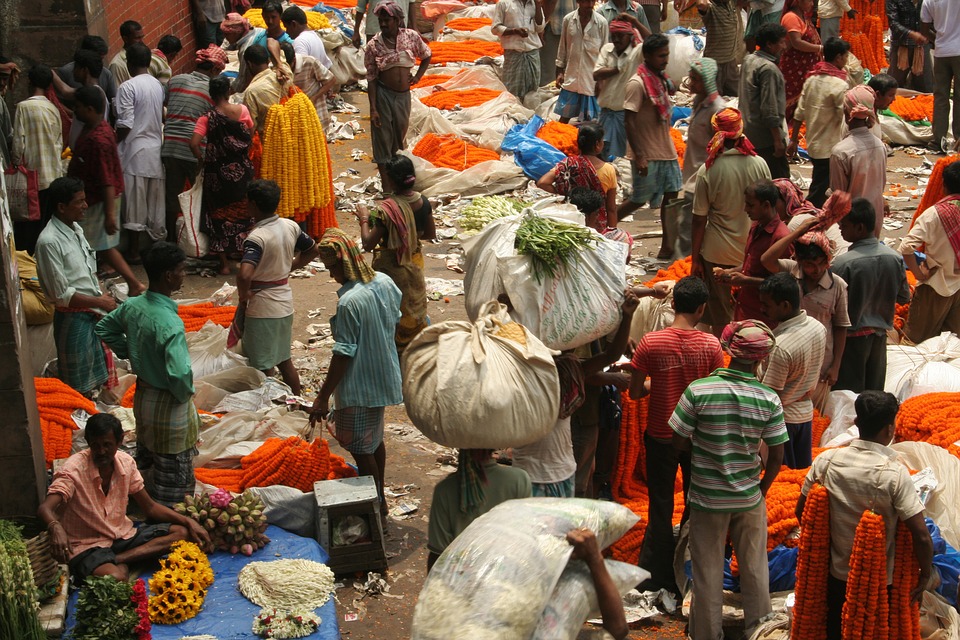Which state of India is likely to return the loan: Bihar, the poorest in the country, with a budget deficit of almost 6% of the state's GDP and a huge financial hole after the introduction of a ban on the sale of alcohol, or Gujarat, a relatively prosperous coastal region with a deficit of less than 2%?
According to the bond market, both states are creditworthy and therefore pay the same interest rate. However, this is a very serious problem for the entire Indian economy.
Just a few years ago, no one except narrow financial experts paid attention to volume of loans of Bihar, Gujarat and 27 other states of the country.
India’s debt burden and its annual budget deficit - both indicators are quite high for a developing market - can partly be explained by excessive extravagance of the central government in Delhi.
However, the sharp jump in net state debt over the past decade from Rs 154 billion in 2006 ($ 3.3 billion) to about Rs 3.9 trillion ($ 60.4 billion) in the recently completed fiscal year means that now they need almost the same amount of funding as the center.
The shift of financial gravity from Delhi to the states is a matter of serious concern. First, there is a statistical vacuum: the central authorities are publishing the state budget documents with a delay of more than a year.
And while the central government is struggling to reduce the budget deficit, as interest payments eat up about a third of the country's tax revenues, the state's chief ministers are spending most of their savings.
All this led to the fact that the overall budget deficit of the states and the central government was at the same level, and India's credit rating is only one point higher than the "garbage" rating, the British magazine The Economist notes.
Investors continue to give money to all states at the same rate for one reason: the central government, despite public discontent, makes it clear that it will take care of the states that will find themselves in a difficult situation.
The authorities also urge state banks, pension funds and insurance companies to issue loans.
So the chief state ministers have every reason to increase the amount of artificially cheap debt, and almost no one pays attention to the current limitation of the deficit of 3%.
Some states have gone far into the "red zone" because of a sharp decline in revenues. Moreover, a number of regions plan to introduce the same "dry law" as in Bihar, although sale of alcohol brings more than a quarter of the revenues to the states’ treasury. Unexpected "demonetization" in November 2016 slowed down the construction, and, consecutively, the flow of money from state permits and duties.
The increased transfers of the central government only partially cover the existing deficit.
Meanwhile, the extravagance of the states pushes up the interest rates on which the central government pays for their debts.
source: economist.com
According to the bond market, both states are creditworthy and therefore pay the same interest rate. However, this is a very serious problem for the entire Indian economy.
Just a few years ago, no one except narrow financial experts paid attention to volume of loans of Bihar, Gujarat and 27 other states of the country.
India’s debt burden and its annual budget deficit - both indicators are quite high for a developing market - can partly be explained by excessive extravagance of the central government in Delhi.
However, the sharp jump in net state debt over the past decade from Rs 154 billion in 2006 ($ 3.3 billion) to about Rs 3.9 trillion ($ 60.4 billion) in the recently completed fiscal year means that now they need almost the same amount of funding as the center.
The shift of financial gravity from Delhi to the states is a matter of serious concern. First, there is a statistical vacuum: the central authorities are publishing the state budget documents with a delay of more than a year.
And while the central government is struggling to reduce the budget deficit, as interest payments eat up about a third of the country's tax revenues, the state's chief ministers are spending most of their savings.
All this led to the fact that the overall budget deficit of the states and the central government was at the same level, and India's credit rating is only one point higher than the "garbage" rating, the British magazine The Economist notes.
Investors continue to give money to all states at the same rate for one reason: the central government, despite public discontent, makes it clear that it will take care of the states that will find themselves in a difficult situation.
The authorities also urge state banks, pension funds and insurance companies to issue loans.
So the chief state ministers have every reason to increase the amount of artificially cheap debt, and almost no one pays attention to the current limitation of the deficit of 3%.
Some states have gone far into the "red zone" because of a sharp decline in revenues. Moreover, a number of regions plan to introduce the same "dry law" as in Bihar, although sale of alcohol brings more than a quarter of the revenues to the states’ treasury. Unexpected "demonetization" in November 2016 slowed down the construction, and, consecutively, the flow of money from state permits and duties.
The increased transfers of the central government only partially cover the existing deficit.
Meanwhile, the extravagance of the states pushes up the interest rates on which the central government pays for their debts.
source: economist.com





